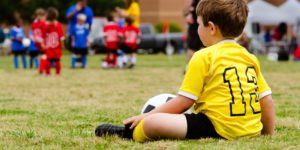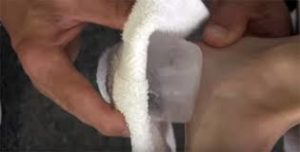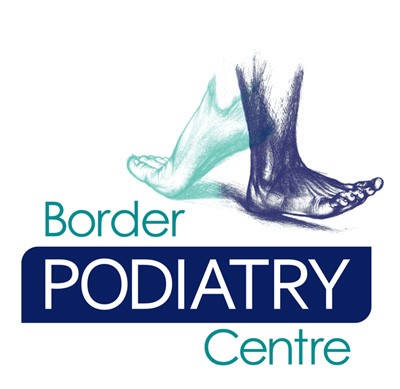Has your child been complaining of heel pain during and after running and playing sports? Are you concerned they are not keeping up with their friends? Has your child recently had a growth spurt? Then this has been written for you and your child.

It’s possible they are suffering from symptoms of Severs disease but don’t worry, we see a lot of this and we are the experts at getting them back on track fast and we are here to help!
Severs disease is a common condition describing irritation and inflammation of the growth plate at the back of the heels. It occurs in both girls and boys between the ages of 7-15 years and seems to be prevalent in more active children. The presenting heel pain may occur in one or both heels, at the back or sides of the heel and is often complained about during or after activity (or sometimes both).


Severs disease is thought to be contributed to by growth patterns – generally where the bones grow faster than the muscles. This causes an overall tightness of the calf and hamstring leg muscles in turn increasing the pull of the Achilles tendon. The extra pull and tension of the Achilles tendon results in the developing growth plate to be pulled apart leading to pain and inflammation.
For some children this heel pain occurs non stop during weight bearing and for others it is intermittent. Have you noticed your child has a tendency to limp or walk on their tiptoes? This can often be seen in children suffering from Severs disease. It’s not as painful therefore they avoid putting their heels on the ground.
There are a few simple and easy steps you and your child need to do to get moving more freely and most importantly, out of pain. These steps we give to our clients with Severs every single day when they visit the clinic.
Firstly, we need to consider how much and what type of activities your child is involved in? This is important because we want to reduce the amount of irritation occurring at the growth plate of the heel and the surrounding soft tissue structures. Resting, or to meet you half way, reducing the amount of activity being undertaken will allow the growth plate to go about doing what it was intended to do which is to allow your child to grow– easier said than done, we agree!
Secondly, when it comes to managing pain and inflammation we know daily icing, stretching, and gentle calf massaging to provides a massive relief. Icing is a great way to keep inflammation at bay and should be applied twice daily for 10 minutes each – particularly after activity. When we think of stretching for the lower limb and Severs disease, target the calf muscles and hamstrings. Hold the stretch for 20 seconds in sets of 3, 2-3 times per day.

If you want to fast track your child out of pain and get to the core of what else is causing their heel pain then a visit to the clinic is a must. We have some extra steps to do this but theses can only be performed in the clinic. So if you’re still noticing your child appears in pain, even after following the above steps, there may be other structural causes contributing to their presenting heel pain. In this case we recommend to call the clinic for an expert consultation with one of our amazing experienced podiatrists for further assessment to get down to the bones of your heel pain today!
It shouldn’t hurt to grow but it does. Don’t set your children up for getting off on the wrong foot in life, get a solution.
